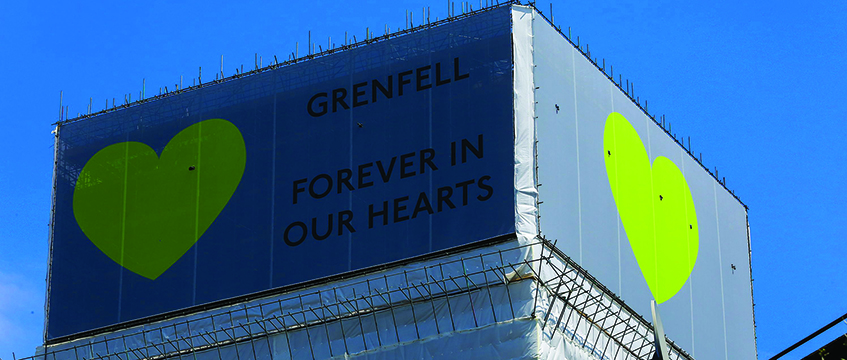The Ministry of Housing, Communities and Local Government (MHCLG) has published its response to last year’s public consultation on the Building a Safer Future report commissioned by the government from Dame Judith Hackitt and published in 2018, setting out its further proposals for building industry and fire safety reform. Despite a truncated consultation period of just six weeks, almost 900 responses were received from stakeholders. The government confirms that a new Building Safety Bill will be tabled this year, though there are no firm timescales for either the Bill or when the new regime will take effect.
The government has confirmed that the new regime will cover all multi-occupied residential buildings of more than six storeys or 18m, whichever measurement is reached first. The scope will be extended in due course to other types of tenanted buildings, based on “emerging risk evidence”. While these aren’t named, we know from last year’s consultation that the government is eyeing other non-residential buildings where people sleep, including schools, hospitals and prisons.
Given the publication of the MHCLG response and despite the current difficulties presented by the Covid-19 outbreak, public and private sector landlords of high-rise residential buildings (HRRBs) need to continue their work in addressing the fire and building safety regime. This is not insignificant and the requirements are set out thus far in the findings of Phase 1 of the Grenfell Tower Inquiry, the Fire Safety Bill and the 53 recommendations put forward by Dame Judith Hackitt in her 2018 report, anticipated as being included in the forthcoming Building Safety Bill.
The safety case
This is no small ask. The safety case that underpins the Hackitt recommendations requires new thinking by landlords for HRRBs. Based on the safety case approach more usually found in high-risk industries such as civil aviation, nuclear and oil and gas, the new regulatory regime covers all stages of a building: from the design, procurement and construction of a HRRB, to the in-occupation, management and maintenance phase.
Particular difficulties are faced by landlords of HRRBs (particularly those already existing/in occupation) where the safety cases will have to address a diverse population of tenants with myriad needs and physical requirements, enjoying different tenures. These are challenges not faced by the more sterile industries that already adopt the safety-case approach: a sensible lead-in period is required in order for the residential sector to meet them. A useful comparison might be the previous public sector Decent Homes programme of the late 1990s/early 2000s which saw public sector landlords design and deliver the upgrade and maintenance works required to make sure that all tenants live in a “decent” home. This programme took 10 years: should we be looking at a similar time period for the new building safety regime (or does the current political environment demand a quicker timetable)?
Safety cases will therefore need to address the personal. It is likely that the individual needs of tenants, visitors and users of buildings and their environs (who can comprise an ever-changing list of new tenants, leaseholders, sub-lessees (known and unknown), contractors, satellite TV installers, Airbnb customers, as well as friends, visiting family members, sofa-surfers etc), need to be informed and kept up to date with their respective fire safety duties, obligations and rights, as well as the unique requirements of accessing and using a HRRB.
Will landlords be required to provide hotel-like emergency escape plans for the back of each individual front door and check that tenants do not remove or obscure them? The visibility and location of signage to assist evacuation and tenant information was one of the requirements of the Phase 1 inquiry findings, so this is not unlikely but how easy will this be to implement and enforce? Landlords will also be required to maintain up-to-date fire safety information, easily accessible by tenants, fire services and other users of the building.
New technologies needed, but at what cost?
This multi-dimensional aspect of HRRBs will make the compilation and maintenance of a safety case both complex and expensive. Data will be key – and landlords are already seizing the challenge by seeking to address the holes in their relevant data and information, but with the regime being so all encompassing, there is a risk that certain elements are turned into a tick-box exercise while other elements are given greater attention.
Questions are already being raised as to whether the required technology exists to deliver a complete solution for the building safety regime. Nevertheless, some landlords are already adopting technology from the nuclear sector to data tag all of the critical components in their HRRBs and using hand-held technology to commence the process of creating 3D models for each of their existing buildings: solutions are being created, but at what cost… and who ultimately pays?
Will these building safety regime requirements make rents and service charges any more affordable? The early adopters group for the building safety regime previously estimated the ongoing annual cost of implementing the Hackitt recommendations will be approximately £90,000 per HRRB. The recent cost benefit analysis that accompanied MHCLG’s response seems to shrink that figure to £28,000pa for an existing HRRB, but if the cost for such additional services and works cannot be recovered by landlords, who will pick up the final bill?
Final comments
A tick-box approach to regulation needs to be avoided at all costs. Hackitt has said that landlords should not wait for legislation and should do everything they can do now to start implementing the recommendations. Given this clarion call, landlords need to consider what they can afford (or indeed, politically, whether nothing should be treated as unaffordable) and how to prioritise the implementation of the Hackitt recommendations now.
The government’s response is available here
Rebecca Rees is a partner at Trowers & Hamlins LLP








